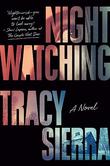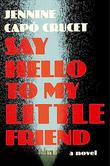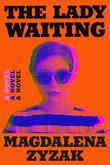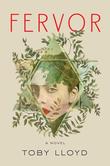
by Tania Branigan ‧ RELEASE DATE: May 9, 2023
A heartbreaking, revelatory evocation of “the decade that cleaved modern China in two.”
Awards & Accolades
Our Verdict

GET IT
Kirkus Reviews'
Best Books Of 2023
Kirkus Prize
finalist
The former China correspondent for the Guardian explores the “cumulative forgetting” of the devastations of the Cultural Revolution.
London-based journalist Branigan, who lived in China from 2008 until recently, delivers a series of poignant, engaging stories that reveal the deep scars left by the Cultural Revolution, which radiated violently across the country from “Red August” 1966 to 1976. Across a beautifully rendered text, the author astutely examines the Maoist ideology that drove the tumultuous class struggle and destruction, leading to the deaths “of as many as 2 million for their supposed political sins and another 36 million hounded.” Prompted to explore the history more deeply after viewing artist Xu Weixin’s exhibit of huge portraits in Beijing of those who “had played a part in this madness, as victim or perpetrator; often both,” Branigan digs into numerous vivid personal tales. Many were teenagers at the time, and some were children of the political elite; they responded to Mao’s direct appeal to “be martial” by becoming zealous devotees of the Red Guard. They inflicted violence on their teachers and denounced their parents, all in the name of destroying the “Four Olds”—old ideas, old culture, old customs, old habits. Many of the perpetrators, including current leader Xi Jinping, would later be disgraced themselves, sent to reeducation camps in rural communities for years afterward. Only Mao’s death and the ousting of the Gang of Four would end the mayhem. Throughout this sensitive, well-researched narrative, Branigan delicately delves into these shattered lives. Many of her subjects are still searching for justice or recognition, while others remain nostalgic for their patriotic youth. The author notes that while the hysteria and fanaticism of the time “forged modern China,” the events are rarely discussed today—even as the trauma continues to resonate deeply.
A heartbreaking, revelatory evocation of “the decade that cleaved modern China in two.”Pub Date: May 9, 2023
ISBN: 9781324051954
Page Count: 288
Publisher: Norton
Review Posted Online: Jan. 4, 2023
Kirkus Reviews Issue: Feb. 1, 2023
Share your opinion of this book
More About This Book
PERSPECTIVES

by David Grann ‧ RELEASE DATE: April 18, 2017
Dogged original research and superb narrative skills come together in this gripping account of pitiless evil.
Awards & Accolades
Likes

21
Our Verdict

GET IT
Kirkus Reviews'
Best Books Of 2017
New York Times Bestseller
IndieBound Bestseller
National Book Award Finalist
Greed, depravity, and serial murder in 1920s Oklahoma.
During that time, enrolled members of the Osage Indian nation were among the wealthiest people per capita in the world. The rich oil fields beneath their reservation brought millions of dollars into the tribe annually, distributed to tribal members holding "headrights" that could not be bought or sold but only inherited. This vast wealth attracted the attention of unscrupulous whites who found ways to divert it to themselves by marrying Osage women or by having Osage declared legally incompetent so the whites could fleece them through the administration of their estates. For some, however, these deceptive tactics were not enough, and a plague of violent death—by shooting, poison, orchestrated automobile accident, and bombing—began to decimate the Osage in what they came to call the "Reign of Terror." Corrupt and incompetent law enforcement and judicial systems ensured that the perpetrators were never found or punished until the young J. Edgar Hoover saw cracking these cases as a means of burnishing the reputation of the newly professionalized FBI. Bestselling New Yorker staff writer Grann (The Devil and Sherlock Holmes: Tales of Murder, Madness, and Obsession, 2010, etc.) follows Special Agent Tom White and his assistants as they track the killers of one extended Osage family through a closed local culture of greed, bigotry, and lies in pursuit of protection for the survivors and justice for the dead. But he doesn't stop there; relying almost entirely on primary and unpublished sources, the author goes on to expose a web of conspiracy and corruption that extended far wider than even the FBI ever suspected. This page-turner surges forward with the pacing of a true-crime thriller, elevated by Grann's crisp and evocative prose and enhanced by dozens of period photographs.
Dogged original research and superb narrative skills come together in this gripping account of pitiless evil.Pub Date: April 18, 2017
ISBN: 978-0-385-53424-6
Page Count: 352
Publisher: Doubleday
Review Posted Online: Feb. 1, 2017
Kirkus Reviews Issue: Feb. 15, 2017
Share your opinion of this book
More by David Grann
BOOK REVIEW
by David Grann
BOOK REVIEW
by David Grann
BOOK REVIEW
by David Grann
More About This Book
BOOK TO SCREEN
BOOK TO SCREEN
BOOK TO SCREEN

by Elie Wiesel & translated by Marion Wiesel ‧ RELEASE DATE: Jan. 16, 2006
The author's youthfulness helps to assure the inevitable comparison with the Anne Frank diary although over and above the...
Elie Wiesel spent his early years in a small Transylvanian town as one of four children.
He was the only one of the family to survive what Francois Maurois, in his introduction, calls the "human holocaust" of the persecution of the Jews, which began with the restrictions, the singularization of the yellow star, the enclosure within the ghetto, and went on to the mass deportations to the ovens of Auschwitz and Buchenwald. There are unforgettable and horrifying scenes here in this spare and sombre memoir of this experience of the hanging of a child, of his first farewell with his father who leaves him an inheritance of a knife and a spoon, and of his last goodbye at Buchenwald his father's corpse is already cold let alone the long months of survival under unconscionable conditions.
Pub Date: Jan. 16, 2006
ISBN: 0374500010
Page Count: 120
Publisher: Hill & Wang
Review Posted Online: Oct. 7, 2011
Kirkus Reviews Issue: Jan. 15, 2006
Share your opinion of this book
More by Elie Wiesel
BOOK REVIEW
by Elie Wiesel ; edited by Alan Rosen
BOOK REVIEW
by Elie Wiesel ; illustrated by Mark Podwal
BOOK REVIEW
by Elie Wiesel ; translated by Marion Wiesel
© Copyright 2024 Kirkus Media LLC. All Rights Reserved.
Hey there, book lover.
We’re glad you found a book that interests you!
We can’t wait for you to join Kirkus!
It’s free and takes less than 10 seconds!
Already have an account? Log in.
OR
Trouble signing in? Retrieve credentials.
Welcome Back!
OR
Trouble signing in? Retrieve credentials.
Don’t fret. We’ll find you.





